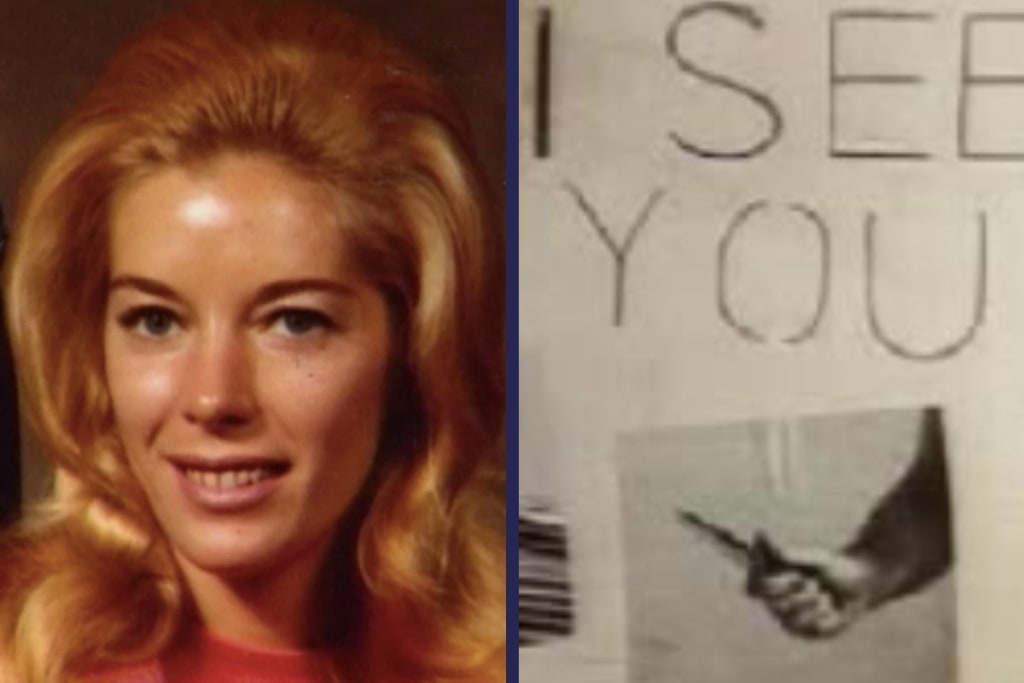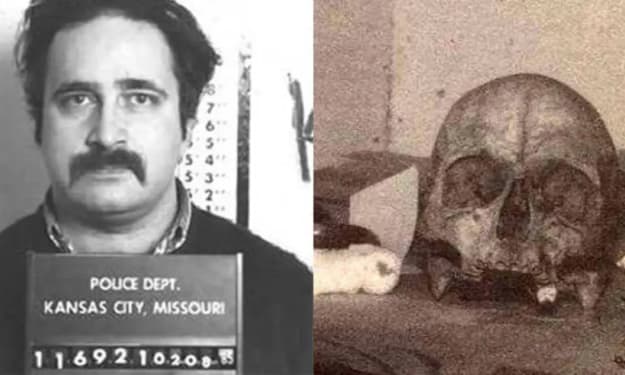The Real Life Invisible Man Case - What Happened to Cindy James?
Mysterious Harassment, Disturbing Clues, and an Unsolved Tragedy in Richmond, Canada

Introduction
Cindy James was the oldest of six children, living in Richmond, Canada, a suburb of Vancouver. Little is known about her upbringing, but at the age of 19, Cindy married Dr. Roy Makepeace, who was 18 years her senior. Cindy worked as a nurse, with a particular fondness for helping children with troubled backgrounds or emotional difficulties. In 1982, Cindy and Dr. Makepeace ended their marriage, and Cindy, looking forward to a fresh start, moved out on her own. Unfortunately, her life soon took a dark turn.
The Beginning of the Ordeal
Shortly after moving out, Cindy began receiving threatening phone calls. These calls were brief but filled with disturbing and violent messages. The harassment escalated from phone calls to receiving unsettling letters. These letters, often collages of cut-out letters from magazines, depicted images of violence and threats, including photos of women with hands around their necks or knives being held. Cindy was understandably terrified but initially kept this ordeal to herself.
Escalation of Threats
As the letters and phone calls persisted, Cindy’s friends and family noticed a change in her demeanor. The once vibrant and happy woman became withdrawn, anxious, and visibly tired. Her work performance also suffered as she struggled to cope with the ongoing harassment. One night, Cindy found three dead cats hanging from her porch, her porch lights smashed, and her phone lines cut. This incident pushed Cindy to involve the police.
Involvement of the Police
When Cindy initially reported the harassment to the police, they were skeptical. They filed reports but took no significant action. Cindy described the phone calls and letters, but without physical evidence or a clear suspect, the police did little more than note her complaints. As the harassment escalated, Cindy continued to report each incident, but the police's skepticism grew, with some officers suggesting she was fabricating the events.
Seeking Help
With the police offering little support, Cindy took matters into her own hands. She moved to a new home, changed her last name, and hired a private investigator named Ozzie Kaban. Ozzie felt that Cindy wasn’t telling him everything and believed she might know more about her attacker than she let on. To protect her, he installed outdoor lights around her house and gave her a two-way radio with a panic button.
The Attack
One night, Ozzie heard strange noises coming from Cindy’s two-way radio. He rushed to her house and found Cindy unconscious, with a knife through her hand and a note that read, “You are a dead bitch.” Cindy survived but could only recall a needle being injected into her arm before she lost consciousness. The police’s lack of action infuriated Ozzie, as they did not take any fingerprints or seriously investigate the incident.
Hypnosis and Polygraph Tests
Desperate for answers, Cindy underwent several hypnosis sessions and a polygraph test, which came back as truthful but was deemed useless by the police due to her “traumatized” state. Despite 24-hour surveillance and phone tapping by the police, no further incidents occurred while they were watching, leading them to suspect Cindy was fabricating the threats.
Continued Harassment and Fire
After the police surveillance ended, the threats resumed. Cindy was later found near a ditch, six miles from her home, wearing only one man’s work boot, a glove, and with cuts and bruises all over her body. She had no memory of what happened. Cindy’s friend Agnes and her husband Tom stayed with her for safety, but one night they were awakened by a fire in the basement. The phone lines had been cut, and when Tom ran outside for help, he saw a man watching the house who then ran away.
Hospitalization and Confession
Cindy’s deteriorating mental state led her doctor to commit her to a psychiatric ward for 10 weeks. Upon release, Cindy confessed to her family that she believed her ex-husband, Dr. Makepeace, was behind the attacks but was too scared to accuse him publicly. The police questioned Dr. Makepeace, who denied involvement and claimed Cindy had split personalities, leaving threatening messages for herself. The police found no evidence to support Cindy’s claims and remained skeptical.
Disappearance and Death
On May 25, 1989, Cindy went missing after a trip to a local shopping center. Her car was found with blood on the driver’s side door, and her belongings scattered inside. Two weeks later, Cindy’s body was discovered in the front yard of an abandoned house. Her hands and feet were bound, and a black nylon stocking was tied around her neck. An autopsy revealed a high dose of morphine in her system, but the police’s theory that she committed suicide or staged the scene was met with skepticism from Cindy’s family and friends.
Conclusion
The Royal Canadian Mounted Police concluded Cindy’s death was either a suicide or an accident, despite the coroner ruling out both possibilities. Cindy’s official cause of death was a morphine overdose. Her ex-husband, Dr. Makepeace, remained a suspect but was never charged due to lack of evidence. Cindy’s parents died believing their daughter was murdered, and her sister continues to search for the truth.
Cindy James’ case remains a chilling mystery. Whether she was tormented by a sadistic perpetrator or suffered from a severe mental illness, her story is a tragic reminder of the devastating impact of unchecked harassment and the importance of believing victims.
About the Creator
Sally A
Ambitious lady that loves animals, health, self-development & beauty 💕
Animal lover 🐾 | Health enthusiast 💪 | Self-development junkie 🌱 | Beauty explorer 💄 | True crimes & mystery enthusiast 🕵️♀️ | Let's journey together! 💫
Enjoyed the story? Support the Creator.
Subscribe for free to receive all their stories in your feed. You could also pledge your support or give them a one-off tip, letting them know you appreciate their work.






Comments
There are no comments for this story
Be the first to respond and start the conversation.